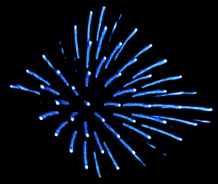Articles

“Fluorescent calibration patterns such as this can provide much greater accuracy in the image data acquired from fluorescent microscopes”
Commercialisation funding will develop a new standard in fluorescence microscopy
A Collaboration between Oxford University and the University of Exeter, led by Dr Alex Corbett, will enhance the commercial impact of a new tool in fluorescence microscopy.
The collaboration has been awarded an Innovation to Commercialisation (ICURe) award, led by SETsquared and funded by HEFCE and InnovateUK. The award will enable Research Fellow, Sahand Zanjani-pour (Biomedical Physics, Exeter University) to complete a series of international meetings in which to identify the commercial potential of the new tool and develop a deeper understanding of the target markets.
Fluorescence microscopy, which uses light to identify the location of dye molecules within a specimen, is an essential tool in nearly all fields of scientific discovery. Despite this, there are no widely adopted standards for the calibration of fluorescent microscopes.
Alex explained: “Calibration provides a wide range of information relating to microscope performance. Without calibration, images taken on two separate microscopes cannot be directly compared as they may have differing magnifications, illumination intensities or detector sensitivities. The increasing importance of three-dimensional imaging in microscopy only adds to the number of parameters to be measured.”
Alex continued: “Methods for determining microscope performance are currently limited to basic techniques such as non-fluorescent etched gratings, which are limited to being two-dimensional, and fluorescent beads, which don’t form a regularly spaced pattern. In many cases this limits the analysis of image data from different sources to a purely qualitative comparison.”
Alex’s recent research into the laser processing of plastic substrates has shown that it is possible to generate bright fluorescent patterns which meet many of the criteria needed to develop a fluorescent calibration standard in optical microscopy.
Alex explained his findings: “The new standard will be able to quantify a range of parameters that determine microscope performance. For example, spatial distortions within the field of view can be quantified by a regular array of bright fluorescent points. This pattern, much like the markings on a ruler, will measure the spatial uniformity of an image but it will achieve it in three dimensions rather than one. By extracting the appropriate calibration data it will be possible not only to identify a reduction in imaging performance, but also the ability to correct for it in post-processing.”
The market research data funded through ICURe will be used to determine the range of features which are of greatest use to the research community, maximising the benefit for users. It will also determine how the technology might best be implemented to enable seamless integration into a busy research lab. The funding has further potential to explore new areas of application for example: passive information displays and security watermarking.
Date: 19 January 2017
